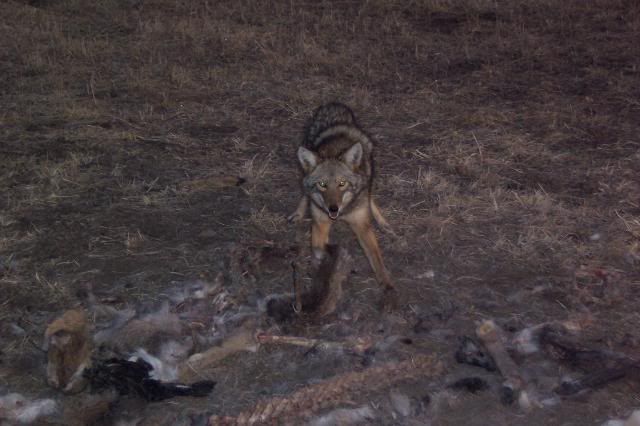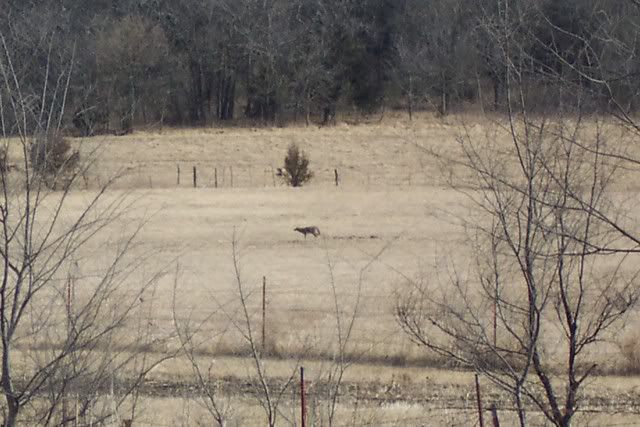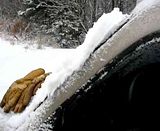Post by trappnman on Dec 9, 2011 8:37:23 GMT -6
my carcass piles are being hit constantly by all sorts of critters, but we have snow, not a lot but a good covering. coon, beaver, rats, mink.
but I've many times seen winter dead deer (makes one wonder if I find 4-6 a year laying by creeks, how many are laying in the woods) sit for weeks, with coyote tracks near enough that they surely must be aware of the deer- but it sits untouched for weeks, then in a few days, gone.
but lets back track a bit-
unless trapping/snaring in deep winter situations, most of us have our coyote season somewhere between mid October and about now. So for the most part, in most areas, the primary landscape is mid to late fall. meaning more often than not bare ground, hunter & harvest activity.
my coyotes, and perhaps yours, are in a state of flux because of the activity, and from the disappearance almost overnight of 1000s of acres of prime coyote habitat. As a FYI, I had a lot of farmers tell me that they have never seen as many rabbits in the corn as this year.
so all year food locations become even more of a draw for success(in my type of country, I can speak of no other) providing they can still access them in comfort- if its sneak in and sneak out- my success rate is low.
success of baits such as a skun carcass, have one factor only and thats that coyotes in a comfort area, might stay there (mill around so to speak) longer, thus giving you a higher success rate.
but to just toss carcasses around, expecting them to do what nature doesn't allow (somewhat cryptic, but ....) doesn't do much good in my opinion.
rionueces, I have no doubt that your success rates are much better setting where you do, rather than right next to the pile.
but I don't think thats because the stench is too high- after all, they still are working the pile. And I used to have a good dead pig pile, where the coyotes rooted in nightly like, well, pigs......
and was that pile a producer- even for 4-5 years after it quit being added on to... big restrictions on dead pigs now, so sadly a thing of the past.....
And I also feel, and this is a guess based on a lot of years following hounds, that canines have a way to select what odors they are processing and to shut out odors they are not concentrating on.
the ability to trail one specific game animal out of hundreds of the same, indicate such an ability must be possible, and common sense tells me that with a nose capable of so much, that without such an ability, sensory overload would occur.
in any case, I do not believe, that coyotes are or can be put off by too strong an odor. Not saying they won't react to strong odors, but saying intensity isn't a factor per se.
but I've many times seen winter dead deer (makes one wonder if I find 4-6 a year laying by creeks, how many are laying in the woods) sit for weeks, with coyote tracks near enough that they surely must be aware of the deer- but it sits untouched for weeks, then in a few days, gone.
but lets back track a bit-
unless trapping/snaring in deep winter situations, most of us have our coyote season somewhere between mid October and about now. So for the most part, in most areas, the primary landscape is mid to late fall. meaning more often than not bare ground, hunter & harvest activity.
my coyotes, and perhaps yours, are in a state of flux because of the activity, and from the disappearance almost overnight of 1000s of acres of prime coyote habitat. As a FYI, I had a lot of farmers tell me that they have never seen as many rabbits in the corn as this year.
so all year food locations become even more of a draw for success(in my type of country, I can speak of no other) providing they can still access them in comfort- if its sneak in and sneak out- my success rate is low.
success of baits such as a skun carcass, have one factor only and thats that coyotes in a comfort area, might stay there (mill around so to speak) longer, thus giving you a higher success rate.
but to just toss carcasses around, expecting them to do what nature doesn't allow (somewhat cryptic, but ....) doesn't do much good in my opinion.
rionueces, I have no doubt that your success rates are much better setting where you do, rather than right next to the pile.
but I don't think thats because the stench is too high- after all, they still are working the pile. And I used to have a good dead pig pile, where the coyotes rooted in nightly like, well, pigs......
and was that pile a producer- even for 4-5 years after it quit being added on to... big restrictions on dead pigs now, so sadly a thing of the past.....
And I also feel, and this is a guess based on a lot of years following hounds, that canines have a way to select what odors they are processing and to shut out odors they are not concentrating on.
the ability to trail one specific game animal out of hundreds of the same, indicate such an ability must be possible, and common sense tells me that with a nose capable of so much, that without such an ability, sensory overload would occur.
in any case, I do not believe, that coyotes are or can be put off by too strong an odor. Not saying they won't react to strong odors, but saying intensity isn't a factor per se.








